A Comprehensive Guide to Sentence Structure and Analysis
Here we are going to talk about five specific types of nouns, each with their unique role: proper, common, collective, abstract, and material.
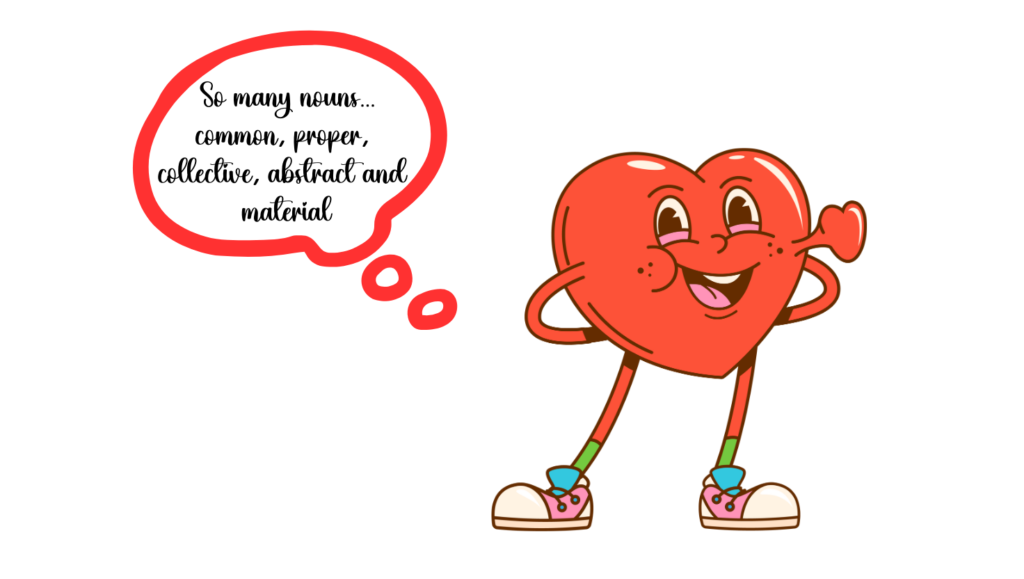
Nouns are the essential building blocks of language and the heartbeat of sentences. Just as our diverse world flourishes through various individuals, the vibrant landscape of language relies on a multitude of noun types. In this informative essay, we will explore the intricate tapestry of nouns and analyze how they function within sentences. Join us as we uncover the different categories of nouns, their significance in effective communication, and their role in enhancing the richness of language.
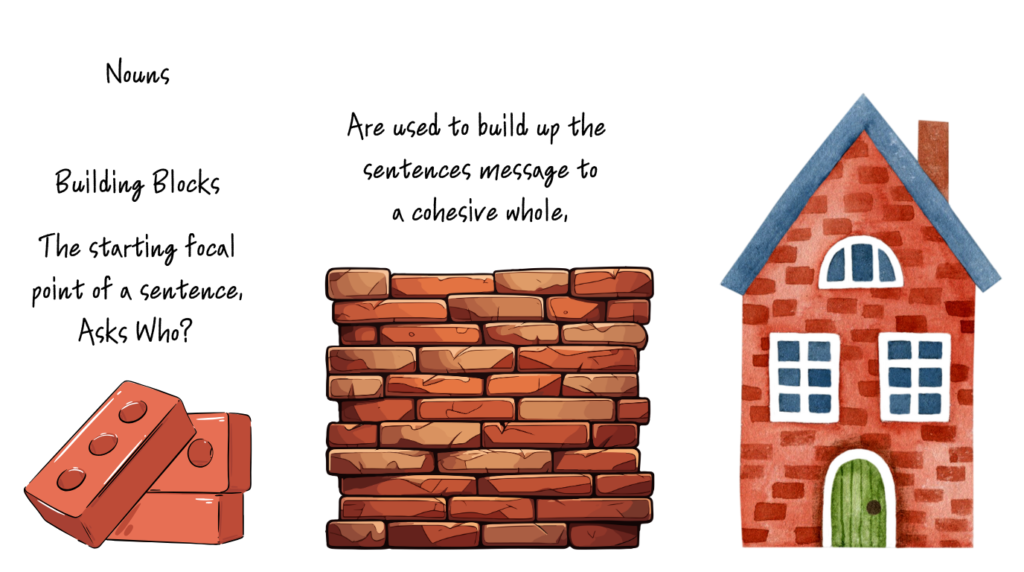
Nouns are like the building blocks of a sentence, similar to how bricks form the structure of a house. Just as each brick has its own unique shape and purpose in creating a stable and recognizable form, nouns represent people, places, things, or ideas that come together to give meaning and clarity to a sentence’s overall message.
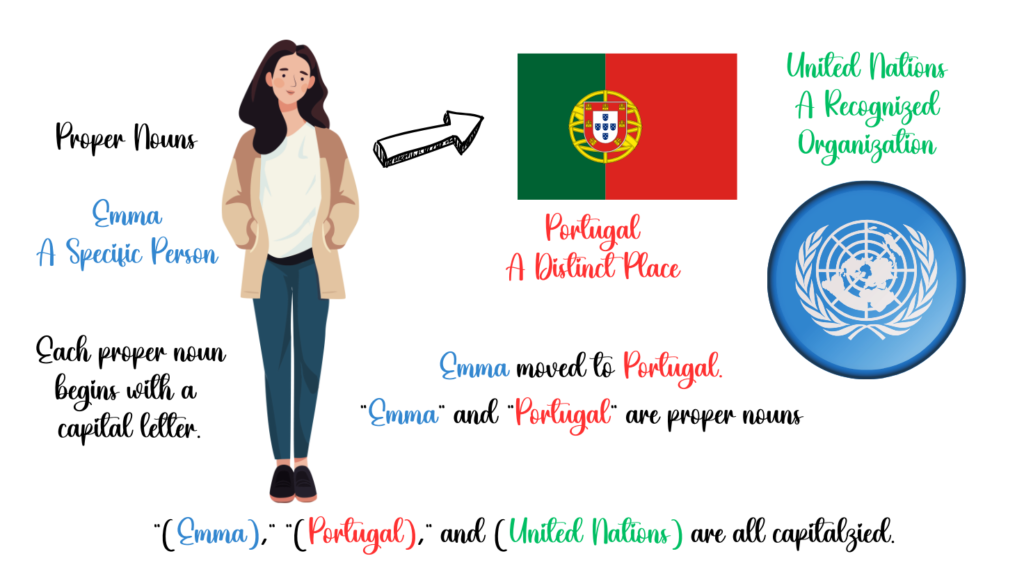
Proper nouns serve as essential punctuation marks on the map of language, identifying unique names of individuals, locations, organizations, and sometimes significant events. Examples include Emma (a specific person), Portugal (a distinct place), and the United Nations (a recognized organization). Analyzing the sentence “Emma moved to Portugal,” we can see that both “Emma” and “Portugal” are proper nouns, clearly indicating a particular individual and a geographical location. Understanding the role of proper nouns is crucial for enhancing your writing, as they help create clarity and precision in content.
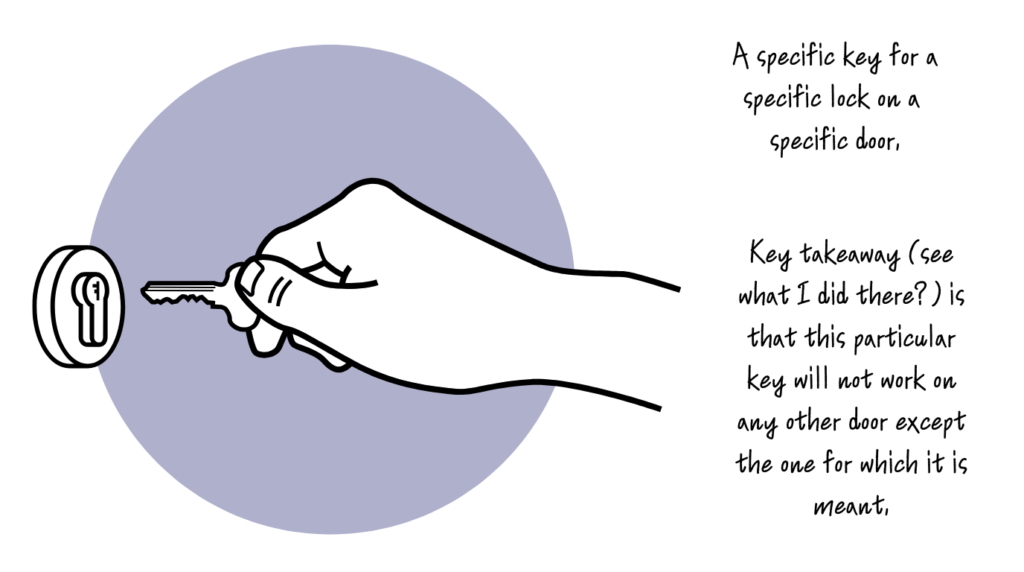
Proper nouns are like unique keys that unlock specific doors; just as each key is designed for one particular lock, proper nouns identify specific people, places, or organizations, distinguishing them from the general names that apply to many.
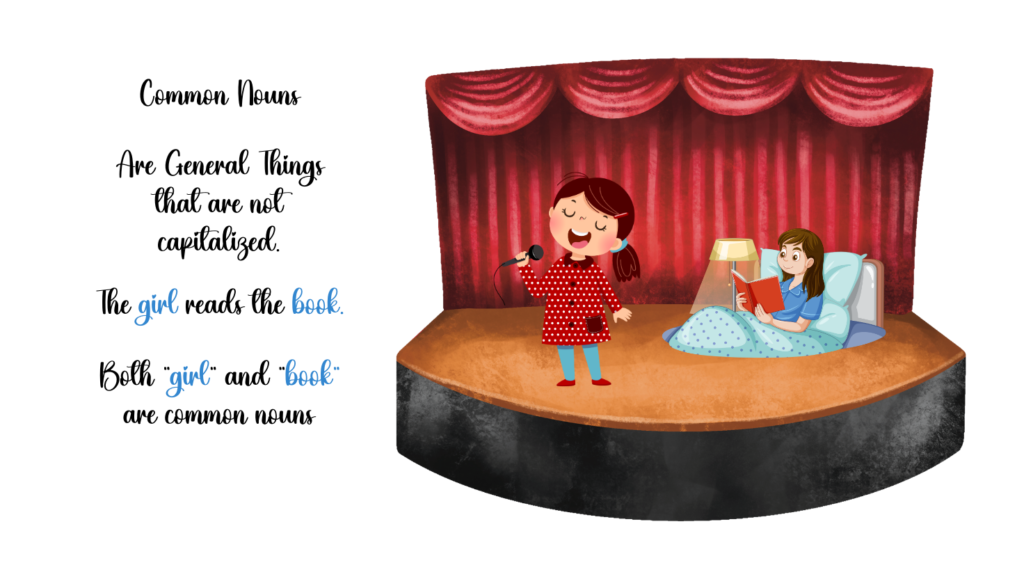
Common nouns serve as the unsung heroes of our language. Much like background actors in a film, they quietly support the narrative, helping to advance the story. They refer to everyday people, places, or objects. For instance, in the sentence “The girl reads a book,” both ‘girl’ and ‘book’ are common nouns. They indicate general concepts (a girl, a book) rather than specific ones, any girl or any book could fit the description.
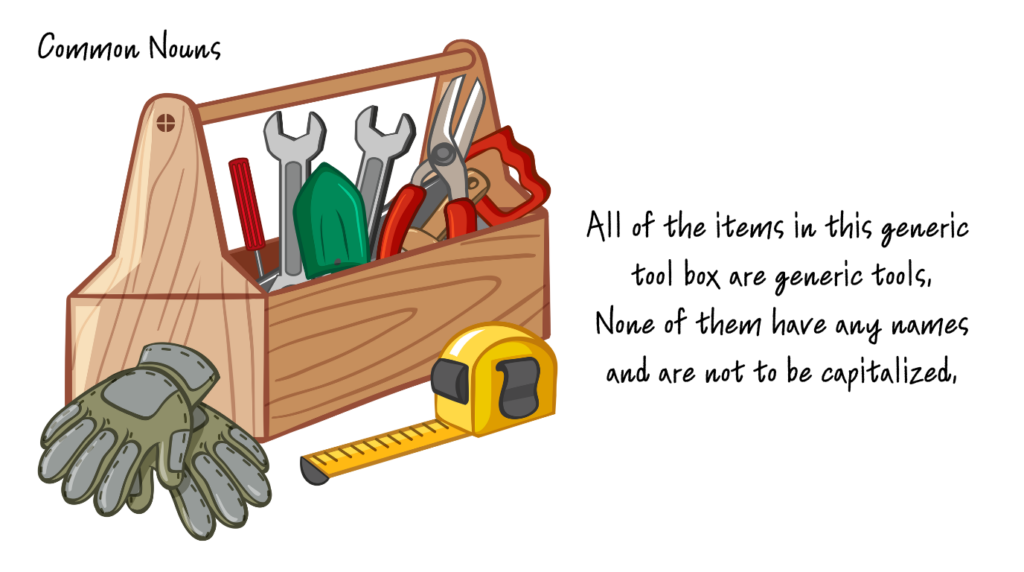
Common nouns are like everyday objects in a toolbox; just as a hammer, screwdriver, and wrench serve general purposes in various tasks, common nouns refer to general categories of people, places, and things that we use to communicate broadly about the world around us.
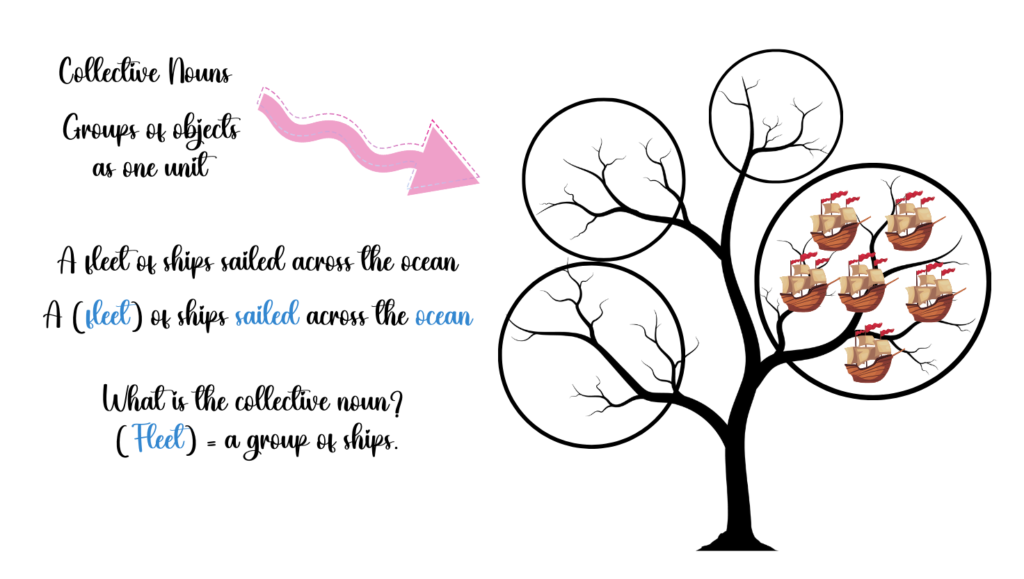
Collective nouns are like trees, spreading their branches to symbolize a group of people, animals, or objects. To grasp the concept of collective nouns, it’s helpful to look at examples. For instance, in the sentence, “A fleet of ships sailed across the ocean,” the word ‘fleet’ serves as the collective noun, indicating a group of ships.

Collective nouns are like a team name for a group of players; just as you refer to a sports team as “the Eagles” regardless of the individual players’ names, collective nouns represent a collection of individuals as a single entity, like “a flock of birds” or “a herd of elephants,” bundling them together under one term.
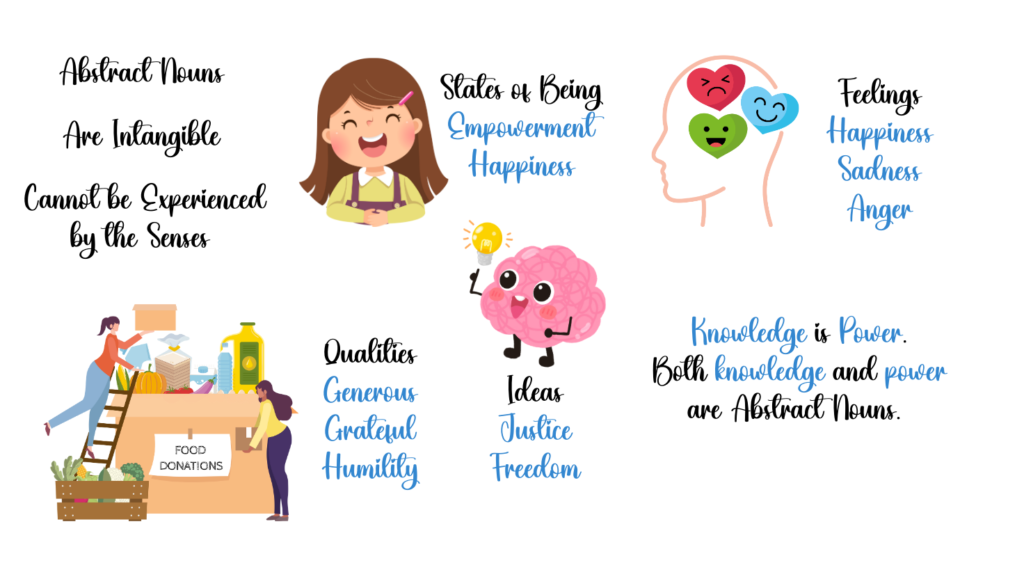
Abstract nouns are the painters of emotions, ideas, qualities, and states of being. Take, for instance the independent clause “Knowledge is power”, both ‘knowledge’ and ‘power’ are abstract nouns, painting images of an idea (knowledge) and a quality (power). They are intangible concepts and cannot be experienced with the senses.

Abstract nouns can be likened to the wind: while you cannot see it or touch it, you can feel its presence and observe its effects on the world around you, just as abstract nouns represent ideas, emotions, and qualities—such as love, freedom, and courage—that shape our experiences yet remain intangible.
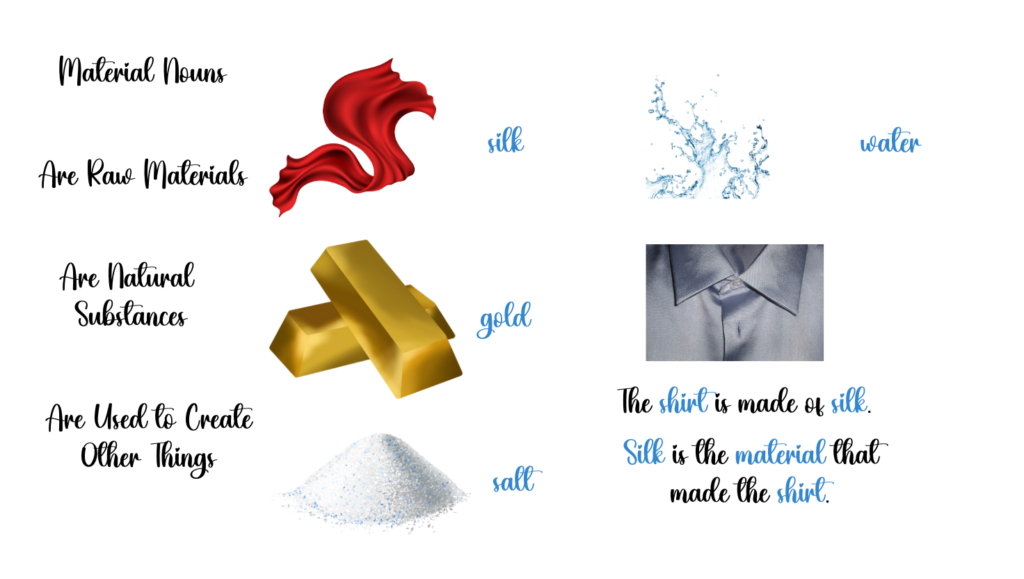
Lastly, material nouns represent, what? If you guessed raw materials or substances, then you would be right. This is the stuff that makes up everything else. In the sentence “The shirt is made of silk”, ‘silk’ denotes the material from which the shirt is constructed.

Material nouns can be compared to the building blocks of a structure; just as bricks, wood, or steel are the essential components that make up a physical building, material nouns represent the substance or materials from which things are made. For instance, in a house, the bricks (representing “clay”), the wood beams (representing “wood”), and the roofing tiles (representing “ceramic”) are all material nouns. Just as a builder selects the right materials to ensure stability, durability, and aesthetic appeal, language uses material nouns to denote the physical substances that create the tangible objects in our world, allowing us to describe and understand the varieties around us, from the fabric of our clothes to the metal in our tools..
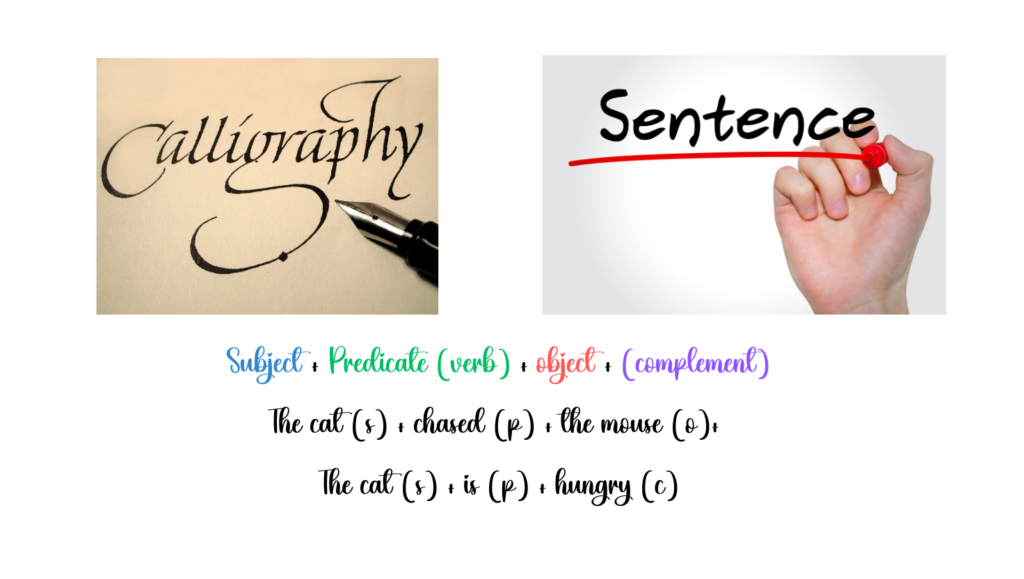
Now, having explored these types of nouns, it’s critical to remember their places when dissecting sentences. Each noun holds a specific role in sentence construction, much like the various letters in a stunning calligraphy piece. When breaking down a sentence, identify the subject, predicate, objects, and complements, and focus on spotting either of the five types of nouns
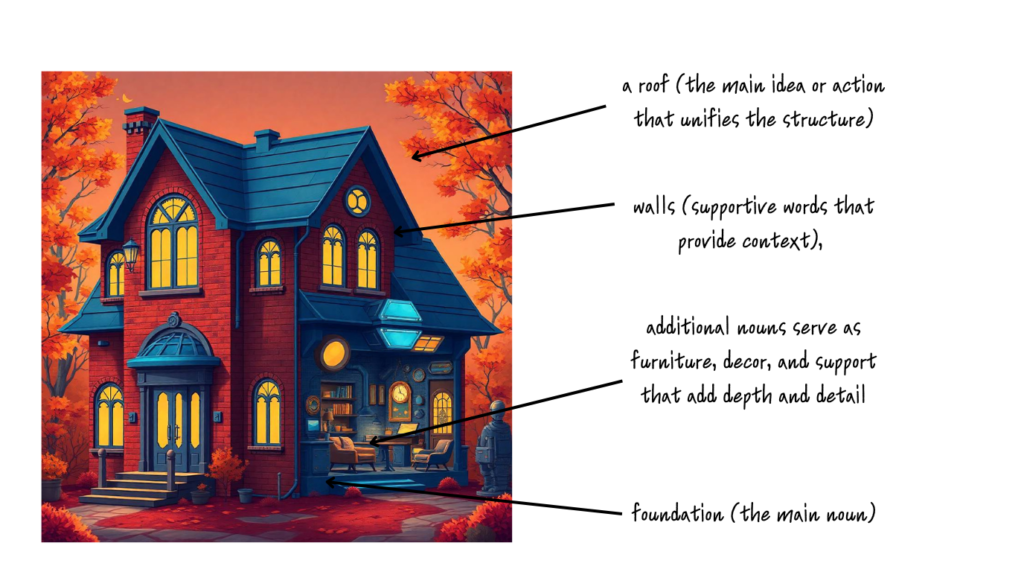
Think of nouns in sentence construction as the building blocks of a house. Just as a house requires a solid foundation (the main noun), walls (supportive words that provide context), and a roof (the main idea or action that unifies the structure), a sentence relies on nouns to establish its core meaning and structure. The foundation represents the subject of the sentence, while additional nouns serve as furniture, decor, and support that add depth and detail, enhancing the overall function and appeal of the home, or in this case, the sentence. Just as each component must thoughtfully relate and fit together to create a cohesive living space, nouns work in harmony to form clear, informative sentences that convey complete thoughts.
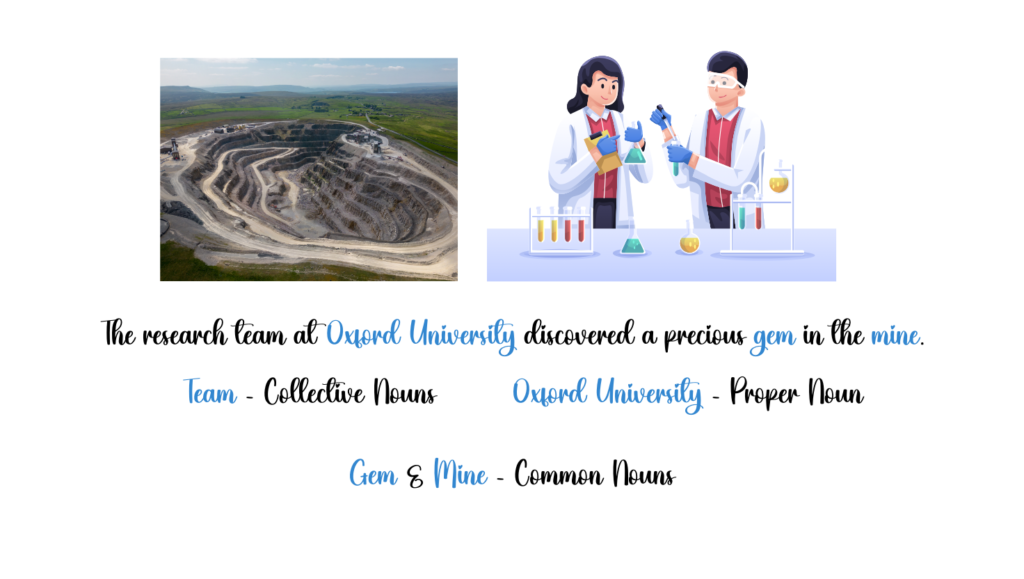
For instance, consider the sentence “The research team at Oxford University discovered a precious gem in the mine.” ‘Team’ is a collective noun, ‘researchers’ and ‘mine’ are common nouns, and ‘Oxford University’ and ‘gem’ are proper nouns.
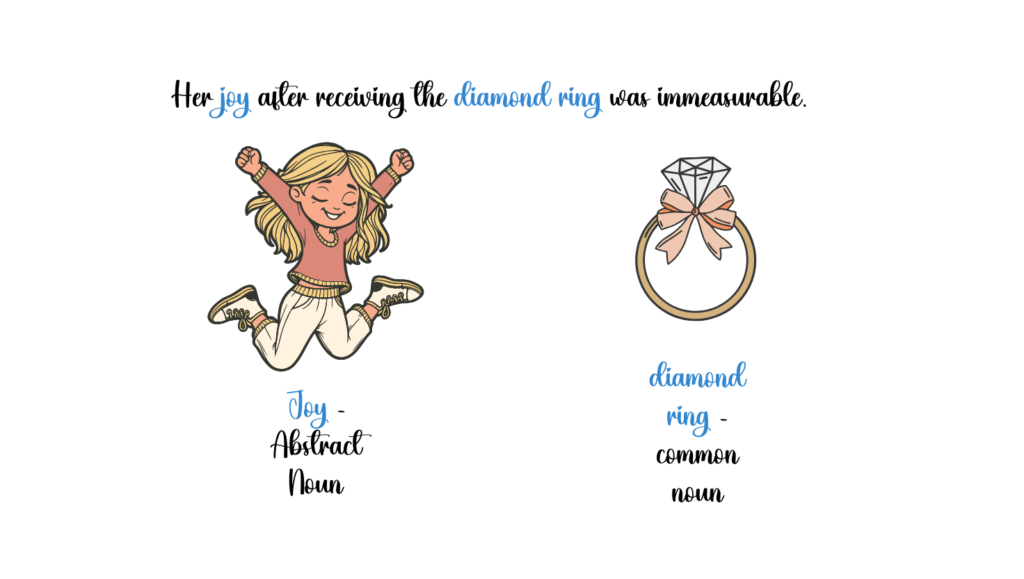
Take another sentence: “Her joy after receiving the diamond ring was immeasurable.” ‘Joy’ is an abstract noun, referring to an intense emotion, and ‘diamond ring’ is a common noun.
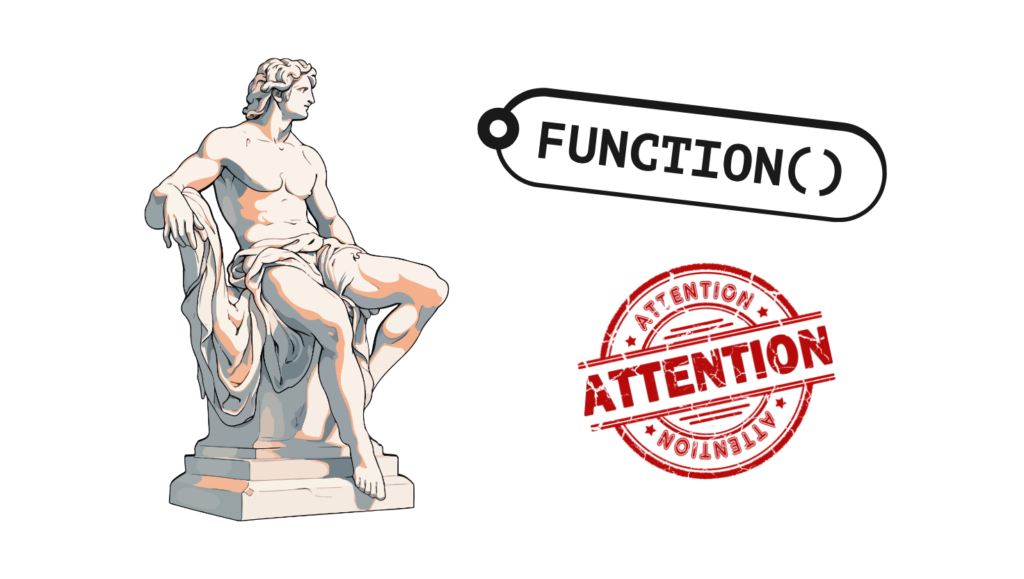
In summary, understanding the categories of nouns and their implementation is enormously important in crafting and dissecting well-structured sentences. As we have seen, each type of noun possesses a unique function and contributes to shaping the magnificent sculpture of language. Identifying them correctly in sentence dissection aids in developing a strong foundation for grammar and expressive language use.
Gaining proficiency in language dynamics demands continuous practice and astute attention. So, keep experimenting with sentences, spot those nouns, and happy dissecting!